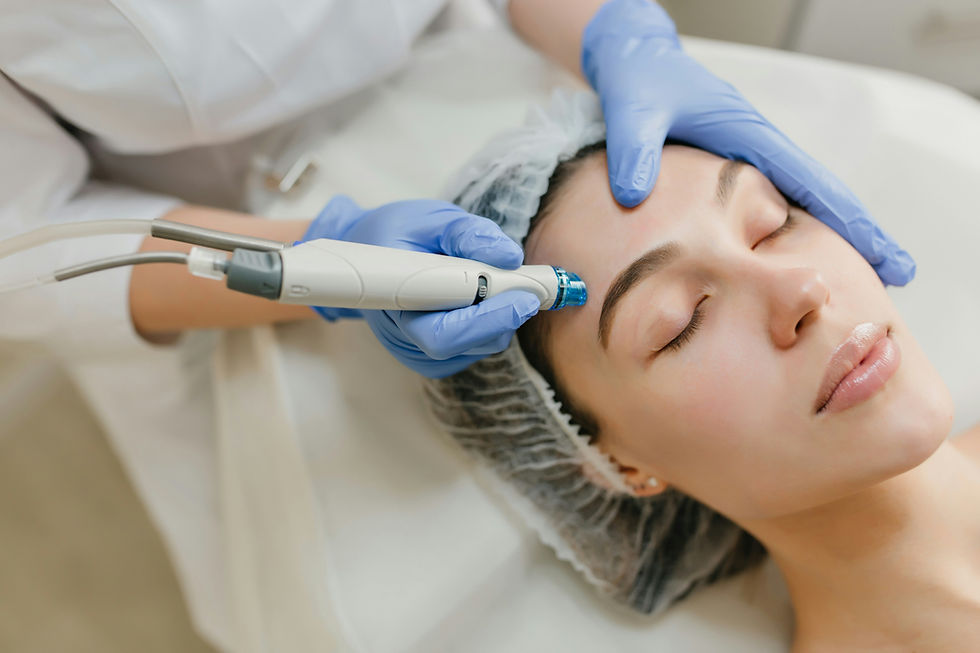Dental Assistants and Hygienists Help the Dentist
- anikapearlnecosia
- Nov 24, 2022
- 3 min read

Besides the dentist, other supporting professionals in the dental office include dental therapists, dental technicians, dental assistants, and hygienists. These professionals help the dentist ensure that the patient receives proper dental care. If you want to experience the best dental care, it's best to contact Waterloo Dentist.
Qualifications for a Dentist
Generally speaking, dental schools combine coursework and clinical experience to prepare graduates for careers as dentists. Dentists diagnose and treat patients with oral disorders. They also administer preventative and corrective procedures, prescribe medications, and provide dental hygiene education. In addition, they may employ dental hygienists and dental technicians.
Dentists usually have a friendly attitude. They are problem-solvers and have excellent customer service skills. They also know how to deal with nervous patients. They are also skilled at communication, deductive reasoning, and managing workflows.
Generally speaking, dentists complete a minimum of five years of training at university. This includes three years of classroom instruction and one or two years of supervised practice. They also must pass a national board exam and a clinical or oral examination.
Dental Hygienists Take X-rays of Teeth and Gums
X-rays of teeth and gums are the common tools used by dental hygienists to diagnose oral health issues. They help to detect dental problems such as gum disease, cavities, and oral infections. In addition, they allow the dentist to see the teeth from different angles. The images produced by X-rays are safe to view.
X-rays are often used in conjunction with gum pocket measurements. The dentist will use this information to detect areas of bone recession. They will also identify areas of trauma to the mouth.
Dental hygienists also take impressions of the teeth to create dental devices. These impressions are used to create models of the teeth for the dentist to work with.
Dental Assistants and Hygienists
Depending on the state in which you live, you can work as a dental assistant or a hygienist. You will be responsible for various administrative and clinical duties in either case. It is important to note that both positions offer strong career growth opportunities.
As a dental assistant, you will work in a dental office, usually under the supervision of a dentist. You will perform various tasks, including scheduling appointments, making patient charts, developing X-rays, and maintaining patient records. You will also be responsible for handing instruments to the dentist during dental procedures.
Oral Surgery
Performing oral surgery at a dentist can help patients in a variety of situations. These procedures include the removal of extra teeth, repositioning the jaw, removing a tumour, or performing a root canal.
The recovery time after an oral surgery varies by person. For many, a week or two of rest is all it takes. Others will require longer recovery times.
The patient may be given a small numbing agent depending on the specific procedure. Oral surgeons also offer sedation options such as nitrous oxide or IV sedation.
Orthodontics
Getting orthodontic treatment at the dentist is a great way to restore a healthy smile and improve your dental health. Depending on the type of problem, the treatment can last from a few months to two years.
Orthodontic treatment can correct dental problems, including abnormal tooth alignment and mismatching jaws. It can also help improve speech and chewing function. However, these problems can cause gum disease, tooth decay, and headaches if left untreated.
Orthodontic treatment can be used to correct problems before they develop. For example, malocclusion is a common problem. Often, it is caused by injury or habits. An orthodontist can help diagnose problems, suggest treatments, and guide a child's growth.
Reconstructive Dentistry
Whether you have lost a tooth or have a mouth full of teeth, reconstructive dentistry can help restore your smile. The process begins with a visit to a dentist. This will allow the dentist to examine your mouth and decide on the best treatment plan.
Reconstructive dentistry can also include cosmetic enhancements, such as porcelain veneers, which can improve the appearance of your smile. In addition, the process may involve cosmetic bonding, which can correct a cracked tooth.
A dentist performs the best reconstructive dentistry with specialized training. These professionals will use restorative procedures, such as crowns, bridges, and implants, to repair or replace a missing or damaged tooth.
Forensic Dentistry
During a criminal case, forensic dentistry at a dentist is an essential part of the identification process. The process includes the assessment of dental evidence, as well as the management of dental evidence, and the writing of a report. The dental evidence can be used to identify a crime's victim, detect the perpetrator, and provide an estimate of age.
Forensic dentistry at a dentist is a multi-disciplinary field that involves the analysis of dental evidence, court testimony, and report writing. Therefore, it requires cooperation from other experts, including pathologists, forensic anthropologists, toxicologists, and criminologists.



Comments